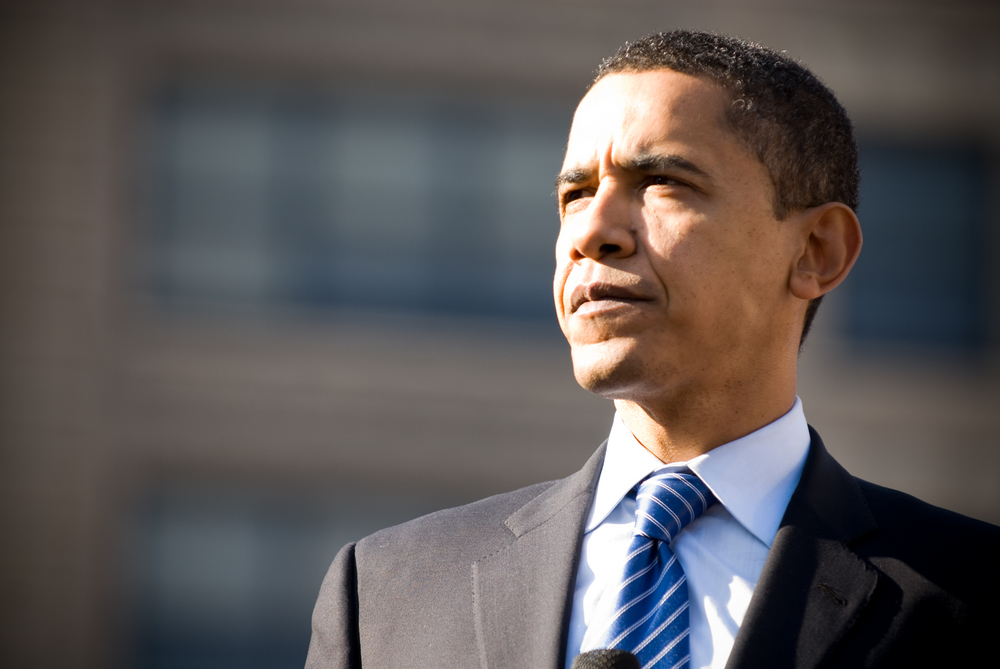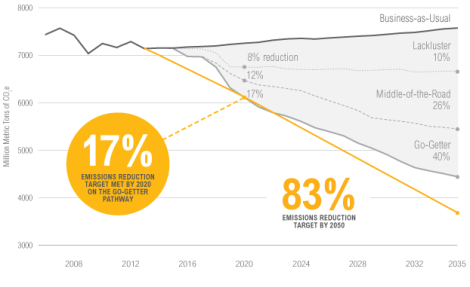Obama is expected to throw climate hawks a bone (or I guess a small rodent) in his State of the Union speech on Tuesday night:
“You’re going to like what you hear,” White House aides have told green groups, according to an official at one environmental organization who expects the president to publicly commit to moving forward with EPA climate regulations.
“In past speeches, there was a lot of, ‘I call on Congress,'” the official added. “And what I’m expecting to see more of this time is, ‘This is what my administration is going to do.'”
If this OOEO (official at one environmental organization) is right, it will be cause for good cheer. But the question remains, even if Barack Obama is pure of heart and dedicated to climate progress, what can he do?
He’ll get no help from Congress. Serious climate legislation is off the table as long as Speaker John Boehner (R-Ohio) is in charge of the House but not in charge of his Tea Party faction. So what can be done without Congress?
The definitive answer on this comes from the World Resources Institute, which recently updated its classic report, “Using Existing Federal Laws and State Action to Reduce Greenhouse Gas Emissions.” (You know you’ve heard of it.) To summarize: A lot can be done! But mostly in the short term. After 2020, you need legislation.
WRI analyzed three scenarios, combinations of federal (executive) action and state policy. They are referred to as lackluster, middle-of-the-road, and go-getter. Here’s how they shake out:
As you can see, with the right mix of federal and state policy, the U.S. could get on a path to reduce emissions 17 percent from 2005 levels by 2020 — the target promised by Obama in Copenhagen. That isn’t a particularly ambitious goal in the grand scheme of things, but getting serious about it would carry quite a bit of symbolic weight.
We’ll put aside the state stuff for now and just focus on what’s in Obama’s hands. WRI identifies four federal policies that together would cover most of the gap between business as usual and a 17 percent cut:
1. EPA carbon standards for existing power plants.
This is the biggie — WRI says it alone can cover 48 percent of the gap. That’s assuming EPA is ambitious and Obama’s willing to stick his neck out a bit. The Natural Resources Defense Council has a proposal for how those rules can be flexible and ambitious, of which I’m a big fan.
2. Phaseout of certain hydrofluorocarbons (HFCs).
WRI is encouraged by the administration’s efforts to amend the Montreal Protocol to further reduce HFCs, which not only harm the ozone layer but also contribute to climate change. While we’re waiting around for that international accord, however, WRI says EPA can just go ahead and phase them out domestically through the Clean Air Act. That would knock another 23 percent off the gap.
3. EPA standards to reduce methane from natural gas systems.
Methane is a potent greenhouse gas and EPA could regulate it as such. WRI gives this one 11 percent of the gap, but it seems like a bit of a wild card to me. There’s so little good data and studies on methane.
4. New appliance and equipment efficiency standards from the Department of Energy.
This is 8 percent of the gap.
Energy efficiency is one area where there is some slim hope of bipartisanship and legislative action. There was even some efficiency in Republican Sen. Lisa Murkowski’s absurdly drill-happy energy plan.
If Obama and Congress are looking for efficiency ideas to work on together, a good place to start is the roadmap recently released by the Alliance Commission on National Energy Efficiency Policy, a bipartisan panel of experts put together by the Alliance to Save Energy. It’s a plan to double U.S. energy productivity by 2030, appropriately called Energy 2030, which the commission estimates would save America $237 billion.
The whole plan is definitely not possible without Congress, though big chunks of it are. It’s a mix of investments, tax reform, modernization of regulations, and public engagement and education. It’s a great, thorough piece of work; I recommend digging into the commission’s recommendations [PDF]. They are extensive.
And hey, while I’m talking tax reform and new reports (this is why I’m such a hit at cocktail parties), don’t miss these recommendations from the American Council for an Energy-Efficient Economy for tax reforms that can boost energy efficiency. There’s a lot of talk of tax reform in the air, what with the periodic fiscal crises that are apparently the new way of life in the U.S., so perhaps some smart reforms have a chance.
Finally, the Center for American Progress has its own report on second-term climate possibilities, many of which do not require Congress. It covers much the same ground as the WRI report, with some additional stuff on use of public lands and, of course, the obligatory shout-out to blocking the Keystone XL pipeline.
From what I can see, there are two big things missing from all these reports:
First, it would be nice if the feds would quit selling Powder River Basin coal to coal companies for pennies on the dollar so they can export more and more of it to China. The Department of Interior is investigating whether coal mining companies are skirting royalties, but honestly, the whole coal leasing game is rigged and corrupt. If the feds can’t keep the damn stuff in the ground, at least they could get taxpayers a fair price for it.
Second, stop the rush to export coal from the West Coast. Many of the decisions about coal ports and coal trains will be made at the local or state level, but Obama could insure that the Corps of Engineers does a comprehensive environmental impact assessment, and that climate effects are part of that assessment. This is a mess:
It remains unclear … what federal or local body will have a final say in the permitting process. Under the National Environmental Policy Act (NEPA), the federal government has an obligation to regulate projects whose existence affects public health and the environment. That broad mandate, however, leaves wide room for interpretation.
And unlike the fight over Keystone XL, the struggle over the Northwestern ports is unlikely to see intervention from the State Department.
“If we had a federal energy policy, or even a federal energy export policy … [the State Department] would likely have a role to play,” wrote Jan Hasselman, an attorney with the group Earthjustice, in an email. “But right now there is a vacuum so you wind up with local county elected officials making decisions with global ramifications.”
Obama needs to step in and rationalize this process. He can’t sit back and watch the U.S. radically ramp up its contribution to global carbon emissions with no federal scrutiny or intervention. Not if he’s serious.
So there you have it. Congress is no help as long as right-wing Republicans have veto power. There is nonetheless a great deal Obama can do if he is sincere about making climate change a priority in his second term. It will take planning and determination, the same kind of concerted effort now going into gun safety and immigration, but it’s possible.




